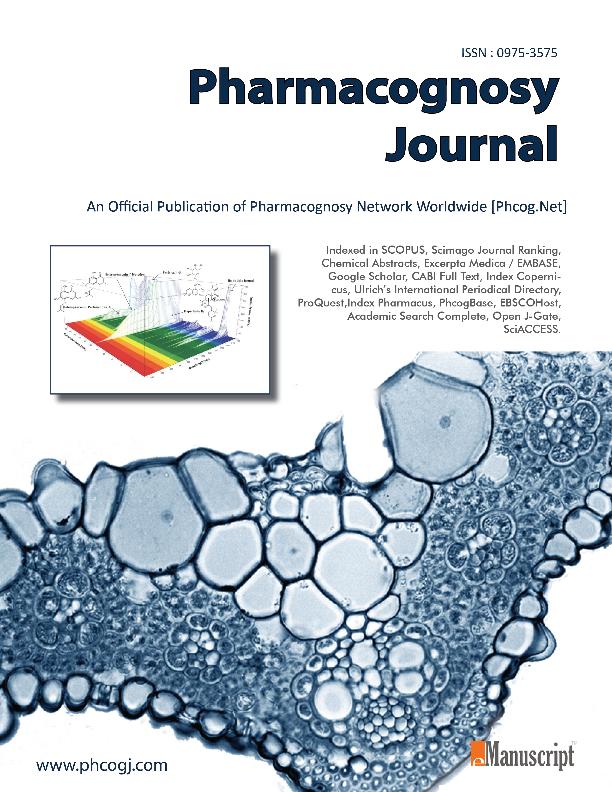Mostrar el registro sencillo del ítem
dc.contributor.author
Torres, Carola Analía

dc.contributor.author
Nuñez, María Beatriz

dc.contributor.author
Isla, Maria Ines

dc.contributor.author
Castro, Marcela Paola

dc.contributor.author
González, Ana María

dc.contributor.author
Zampini, Iris Catiana

dc.date.available
2017-10-25T15:33:06Z
dc.date.issued
2015-12
dc.identifier.citation
Torres, Carola Analía; Nuñez, María Beatriz; Isla, Maria Ines; Castro, Marcela Paola; González, Ana María; et al.; Antibacterial activity of tinctures from Tree leaves belonging to the Bignoniaceae family and their synergistic effect with antibiotics; Pharmacognosy Network Worldwide; Pharmacognosy Journal; 7; 6; 12-2015; 400-405
dc.identifier.issn
0975-3575
dc.identifier.uri
http://hdl.handle.net/11336/27078
dc.description.abstract
Context: Some species of Bignoniaceae are widely used in medicinal practice by the natives of South America. Aims: Tinctures and infusions from twelve tree species of this family were evaluated for in vitro antibacterial activity against pathogenic bacteria. The effect of interactions between the four most active extracts and conventional antibiotics was also evaluated. Methods and Material: Bioautography and disc diffusion methods were used to select the most active extracts, then agar macrodilution and broth microdilution method were used to determine the minimal inhibitory and minimal bactericidal concentration (MIC and MBC). Time-kill assay and checkerboard method were employed to determine the type of antimicrobial effect and synergism, respectively. Results: It could be determined that tinctures from Catalpa bignonioides, Handroanthus pulcherrimus, Tabebuia nodosa and Tecoma stans were able to inhibit bacterial growth. The MIC and MBC observed were between 125-1000 μg GAE/ml and 500-1000 μg GAE/ml, respectively. The tested extracts were more effective against Gram-positive microorganisms. Time-kill experiments indicated bacteriostatic activity. Phytochemical screening showed terpenoids,phenols and flavonoids. Alkaloids were detected only in Tecoma stans. Among these combinations, the best was Tabebuia nodosa extract plus gentamicin. In most cases, MIC values were reduced 16-32 times for antibiotics, and even 8-16 times for extracts. Conclusion: These results revealed that some of the selected combinations could efficiently inhibit the growth of tested strains at lower concentrations than those required for the lonely use of the antimicrobial. These extracts would improve the efficacy of Antibiotics against resistant bacteria, hence they could be used for anti-infective therapy.
dc.format
application/pdf
dc.language.iso
eng
dc.publisher
Pharmacognosy Network Worldwide

dc.rights
info:eu-repo/semantics/openAccess
dc.rights.uri
https://creativecommons.org/licenses/by-nc-sa/2.5/ar/
dc.subject
Checkerboard Method
dc.subject
Fractional Inhibitory Concentration
dc.subject
Gentamicin
dc.subject
Tabebuia Nodosa
dc.subject
Time Kill Experiments
dc.subject.classification
Bioquímica y Biología Molecular

dc.subject.classification
Ciencias Biológicas

dc.subject.classification
CIENCIAS NATURALES Y EXACTAS

dc.title
Antibacterial activity of tinctures from Tree leaves belonging to the Bignoniaceae family and their synergistic effect with antibiotics
dc.type
info:eu-repo/semantics/article
dc.type
info:ar-repo/semantics/artículo
dc.type
info:eu-repo/semantics/publishedVersion
dc.date.updated
2017-08-24T18:59:39Z
dc.journal.volume
7
dc.journal.number
6
dc.journal.pagination
400-405
dc.journal.pais
India

dc.description.fil
Fil: Torres, Carola Analía. Universidad Nacional del Chaco Austral. Departamento de Ciencias Basicas y Aplicadas; Argentina. Consejo Nacional de Investigaciones Científicas y Técnicas; Argentina
dc.description.fil
Fil: Nuñez, María Beatriz. Universidad Nacional del Chaco Austral. Departamento de Ciencias Basicas y Aplicadas; Argentina
dc.description.fil
Fil: Isla, Maria Ines. Consejo Nacional de Investigaciones Científicas y Técnicas. Centro Científico Tecnológico Conicet - Tucumán. Instituto de Química del Noroeste. Universidad Nacional de Tucumán. Facultad de Bioquímica, Química y Farmacia. Instituto de Química del Noroeste; Argentina
dc.description.fil
Fil: Castro, Marcela Paola. Universidad Nacional del Chaco Austral. Departamento de Ciencias Basicas y Aplicadas. Laboratorio de Microbiología de Alimentos; Argentina. Consejo Nacional de Investigaciones Científicas y Técnicas; Argentina
dc.description.fil
Fil: González, Ana María. Consejo Nacional de Investigaciones Científicas y Técnicas. Centro Científico Tecnológico Conicet - Nordeste. Instituto de Botánica del Nordeste. Universidad Nacional del Nordeste. Facultad de Ciencias Agrarias. Instituto de Botánica del Nordeste; Argentina. Universidad Nacional del Nordeste; Argentina
dc.description.fil
Fil: Zampini, Iris Catiana. Consejo Nacional de Investigaciones Científicas y Técnicas. Centro Científico Tecnológico Conicet - Tucumán. Instituto de Química del Noroeste. Universidad Nacional de Tucumán. Facultad de Bioquímica, Química y Farmacia. Instituto de Química del Noroeste; Argentina
dc.journal.title
Pharmacognosy Journal
dc.relation.alternativeid
info:eu-repo/semantics/altIdentifier/url/http://www.phcogj.com/article/84
Archivos asociados
